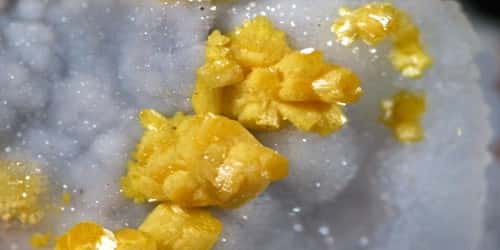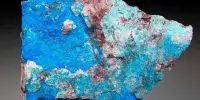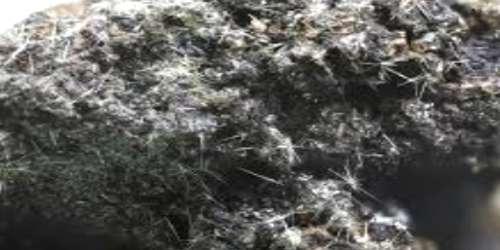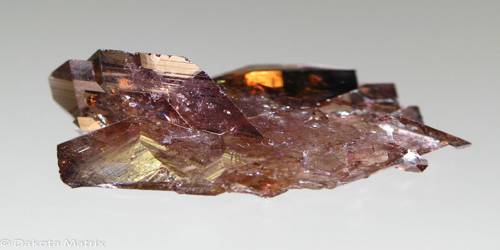Kleinite is a rare mineral that has only been found in the United States and Germany that occurs in hydrothermal mercury deposits. It is a mineral consisting of a basic oxide, sulfate, and chloride of mercury and ammonium. Kleinite is named after Carl Klein (1842–1907), who was a professor of mineralogy at the University of Berlin.
It has been hypothesized that kleinite formed through a “reaction of cinnabar with oxidized meteoric water”, with this reaction being the source of kleinite’s nitrogen.
General Information
- Category: Mineral
- Formula: (Hg2N)(Cl,SO4) · nH2O
- Crystal system: Hexagonal
- Crystal class: Dihexagonal dipyramidal 6/mmm (6/m 2/m 2/m)
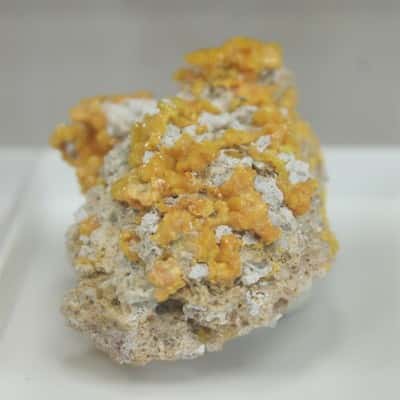
Fig: Kleinite
Properties
It occurs associated with calcite, gypsum and (rarely) barite or calomel. Its color can range from pale yellow/canary yellow to orange, and it is transparent to translucent. As a photosensitive mineral, its coloration darkens when exposed to light.
- Color: Light to canary-yellow, orange
- Crystal habit: Short prismatic to equant crystals exhibiting prominent {1010}, {2021}, and {0001}
- Cleavage: Uneven on {0001}, imperfect on {1010}
- Tenacity: Brittle
- Mohs scale hardness: 3.5
- Luster: Adamantine to greasy
- Streak: Sulfur yellow
- Diaphaneity: Transparent to translucent
- Specific gravity: 7.9-8.0
Occurrences
Kleinite is a rare mineral found only in the United States and in Germany, and it occurs in hydrothermal mercury deposits. Associated minerals include terlinguaite, gypsum, barite, calcite, mosesite, calomel, montroydite, and other mercury minerals.
Information Source:
